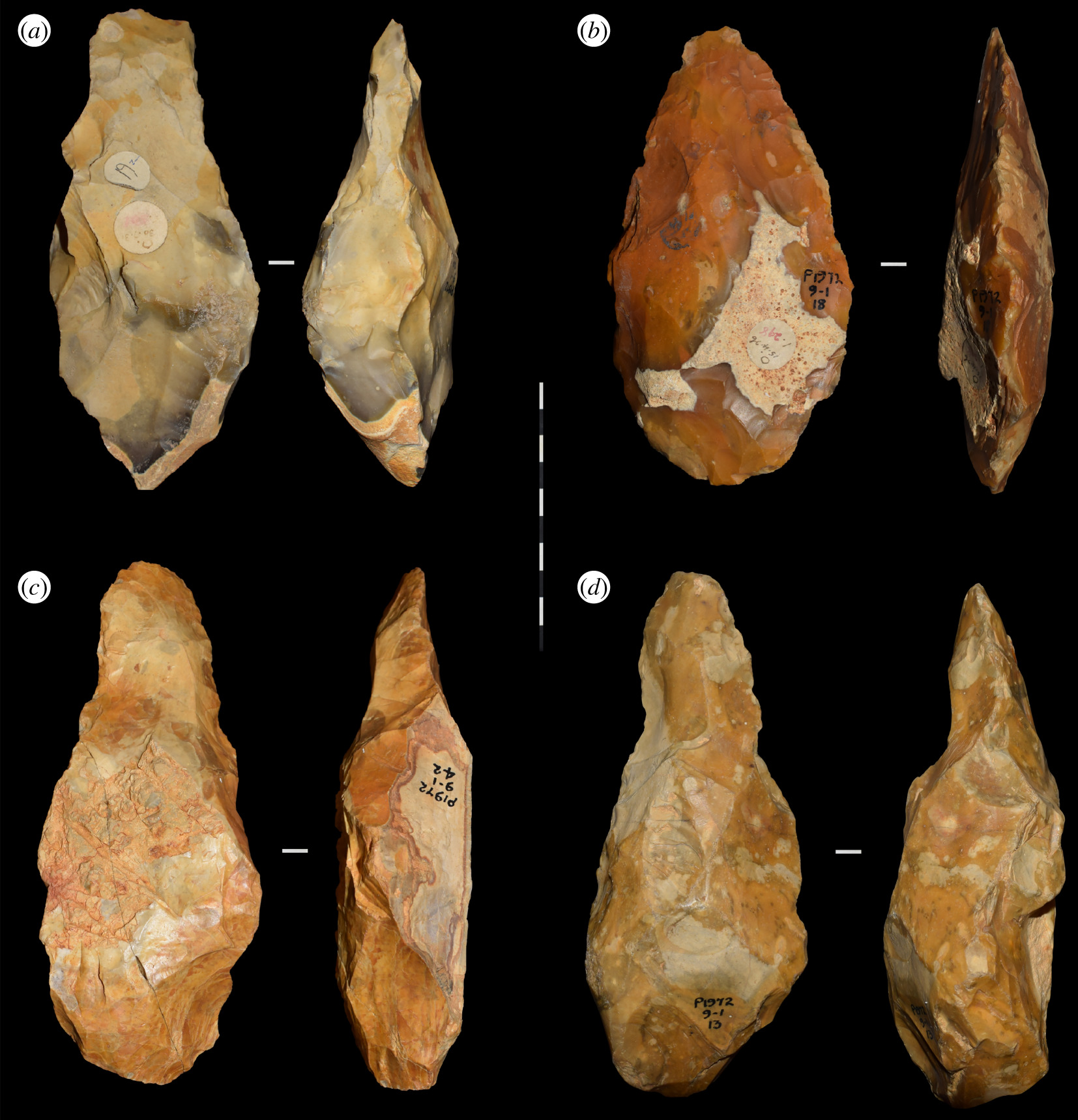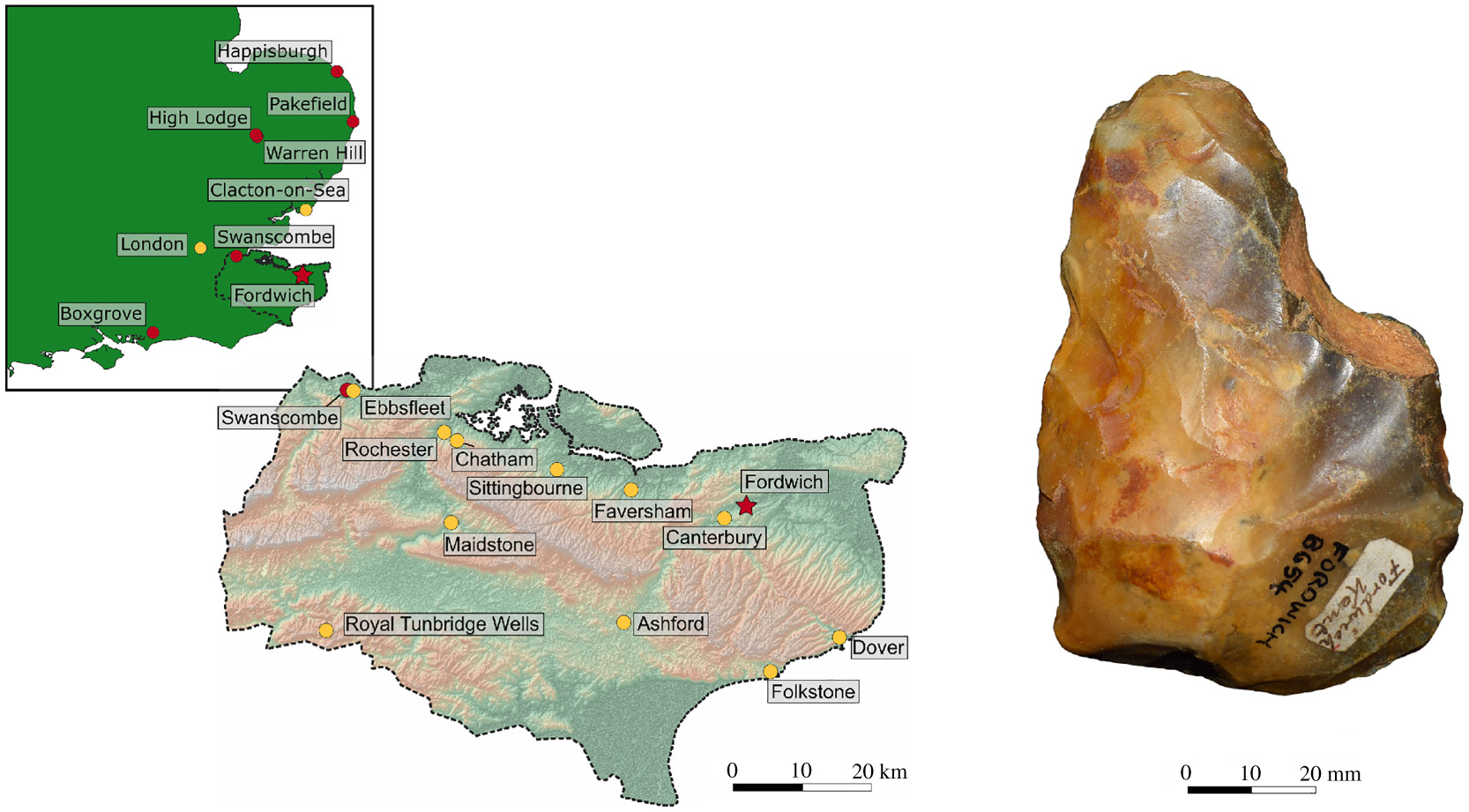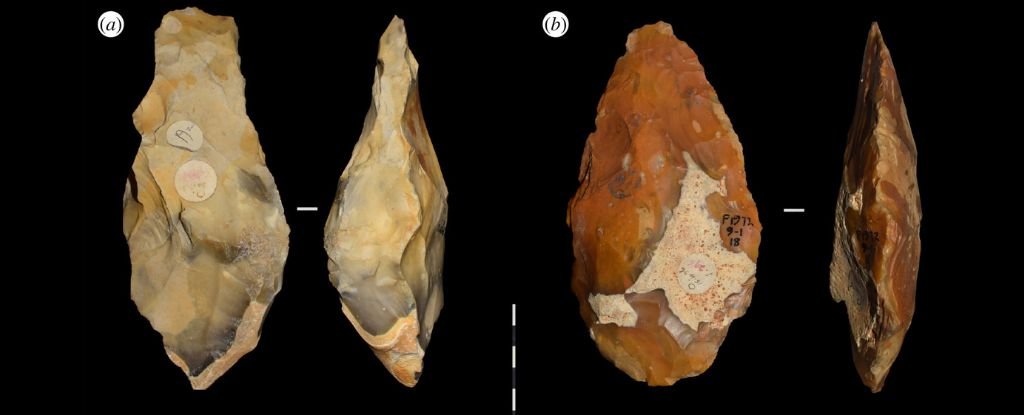Products You May Like
An overlooked archaeological site outside of Canterbury turned out to contain some of the oldest human-made tools in Britain.
Many of the artifacts were found in the 1920s in the market town of Fordwich, Kent, but they were only recently properly dated.
According to modern radiometric techniques, the collection of more than 330 hand axes and 251 flakes, scrapers, and cores were most likely fashioned between 560,000 and 620,000 years ago.
Given the style in which the tools were made, researchers often attribute them to a species of early human known as Homo heidelbergensis.
These could have been among the first humans to settle in Briton for the long term, with signs of their presence dating back around 500,000 years; artifacts left by an earlier occupation by an unknown human species suggest short forays into the territory as far back as just under 1 million years ago.
To put that in perspective, Neanderthals arrived on the scene around 400,000 years ago, and our species didn’t show up on the island until about 40,000 years ago.
Members of H. heidelbergensis are known to have been capable hunters, and while no human remains were found at Fordwich, the sheer number and diversity of tools suggest these early humans were very much at home in the region.
Archaeologists suspect that H. heidelbergensis used the hand axes and scrapers found at Fordwic to prepare animal hides for use as clothing or shelter.
“The range of stone tools, not only from the original finds, but also from our new smaller excavations suggest that hominins living in what was to become Britain, were thriving and not just surviving,” says Palaeolithic archaeologist Tomos Proffitt from the Max Planck Institute.
 A selection of handaxes found in Fordwich in the 1920s. (Key et al., Royal Society Open Science, 2022)
A selection of handaxes found in Fordwich in the 1920s. (Key et al., Royal Society Open Science, 2022)
The site isn’t the oldest evidence of human activity in Britain, but it’s one of the few providing a glimpse into life in this time frame.
During H. heidelbergensis‘ time, Britain was still connected to the European mainland, making travel from France and Spain comparatively more accessible than it is today. That said, the region’s temperatures were often cold and uncompromising.
Some human footprints and basic tools were also found in Norfolk dating back more than 840,000 years ago, indicating at least brief trips to the frigid northwest of Europe. Yet permanent settlements probably weren’t built in Britain until much later, when the climate was more liveable.
Whether these ancient footprints were made by H. heidelbergensis or another early species, called Homo antecessor, which lived in Spain at the time, is still up for debate.
Regardless, the remains at Fordwich are a sort of bridge between the earliest travelers to Britain and the first real settlers, and yet for 90 years, its importance in early human history was all but ignored.
 The location of Fordwich in Britain. (Key et al., Royal Society Open Science, 2022)
The location of Fordwich in Britain. (Key et al., Royal Society Open Science, 2022)
The current study is the first major archaeological undertaking at the site, revealing some of the oldest artifact-bearing sediments in Britain.
In fact, the authors say Fordwich is the oldest, directly dated, H. heidelbergensis stone tool site in Britain and among the oldest in northwest Europe. It also holds the earliest example of ‘scrapers’ in British archaeology.
“The diversity of tools is fantastic. In the 1920s, the site produced some of [the] earliest handaxes ever discovered in Britain,” says the excavation director Alastair Key from the University of Cambridge.
“Now, for the first time, we have found rare evidence of scraping and piercing implements at this very early age”.
Key and his colleagues hope Fordwich can now take its rightful place as a pivotal archaeological site in northwest Europe.
The study was published in Royal Society Open Science.
